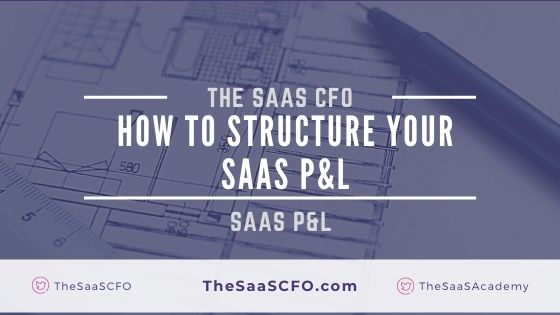

The SaaS P&L is critical to the management of your SaaS business. I talk about the SaaS P&L (profit and loss statement) almost every week with SaaS founders, finance, and accounting teams. At this point, I’ve reviewed hundreds of SaaS P&Ls (also called an income statement). I’d say about 90% of them are structured incorrectly, 5% are close, and 5% are correct.
A properly structured SaaS P&L is a foundational pillar of financial management for SaaS teams, Boards, and investors. In this post, I’ll dive into the SaaS P&L structure, so that you can perfect your SaaS P&L.
My SaaS P&L is structured in five major sections. These sections include bookings, revenue, cost of goods sold (COGS), operating expenses (OpEx), and non-operating.
When I assess a SaaS P&L, I start with a macro view of these sections. Do we have the major blocks in place? If not, we need to dig into the major functions within your company and equate them to SaaS departments.
Understanding your business model is important to this process, especially for the definition of your COGS departments.
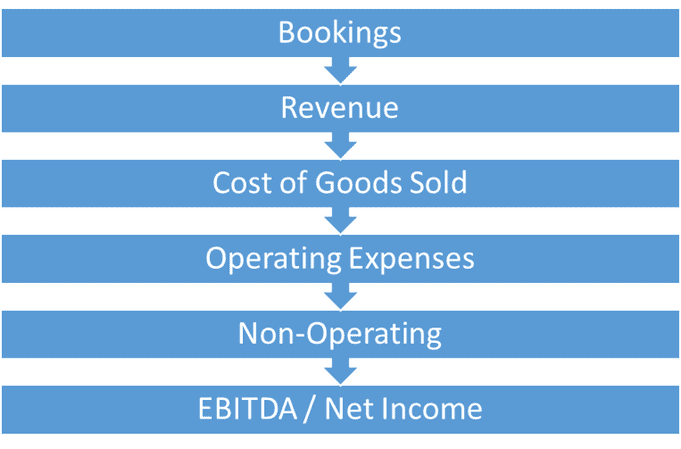
A SaaS booking is an executed contract for product and/or services. This concept still applies if you offer a low price point, self-service delivery SaaS product. I like to summarize bookings at the top of my P&L. Why? Because everyone asks about bookings performance! If they don’t, they should.
Bookings are life of our SaaS business. It drives our revenue and is a common water cooler discussion. I summarize bookings based on our major streams. If we have only subscription revenue, we will summarize subscriptions bookings on an ARR-basis. If we sell professional services to onboard our customers, we will summarize the total, contracted one-time services revenue.
Tips and Tricks
See my SaaS bookings post on a deep dive into this topic.

The revenue section in our SaaS P&L is defined by our products, services, and pricing. We must show clear and distinct revenue streams. Recurring revenue must be separate from one-time revenue. Recurring revenue must be broken down into contracted versus variable.
Revenue Categories
Tips and Tricks
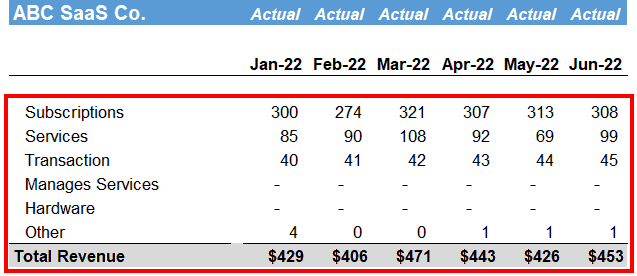
SaaS cost of goods sold, or COGS, are the expenses in our SaaS business that are required to deliver and/or support our revenue streams and customers. For pure play SaaS, you typically see Support, Services (if you have onboarding), Customer Success (if they don’t sell), and Dev Ops. Of course, you could also have transaction and hardware cost centers.
COGS Cost Centers
Tips and Tricks
For a deep dive on SaaS COGS, check out this post.
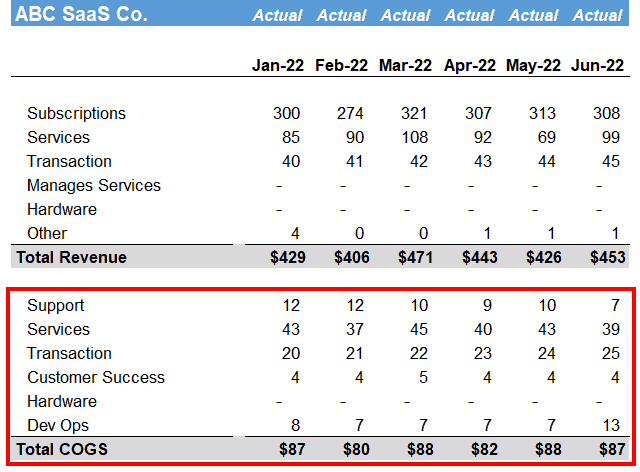
SaaS operating expenses, or OpEx, are the expenses below gross profit that support the infrastructure, growth, and continued development of our business model. I hate to say “always,” but SaaS OpEx almost always looks like the structure below. It really never varies from this.
OpEx Cost Centers
Tips and Tricks
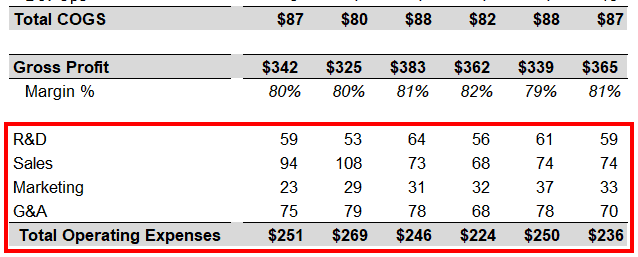
The non-operating section summarizes our non-operating expense and income. This could be interest expense on your debt and/or interest earned on cash investments. Of course, it gets more complicated than that.
With non-operating, we want to ensure that we are NOT coding this expense/income to G&A or some other spot on our P&L. I’ll also code corporate taxes to this line if the entity is taxed at the corporate level.

Generally, here is what I am targeting for SaaS P&L benchmarks. For early stage SaaS, you will not hit these nor do you want to yet. But over time, you will want to keep these benchmarks in mind and your progress towards them.
Is your SaaS structured like the sections above? If not, you need to investigate your chart of accounts and department coding. There is so much insightful data coming from your SaaS P&L. It’s also much easier to calculate your SaaS metrics.
Download the my SaaS P&L “explained” template below to help guide you on your journey towards financial transparency.
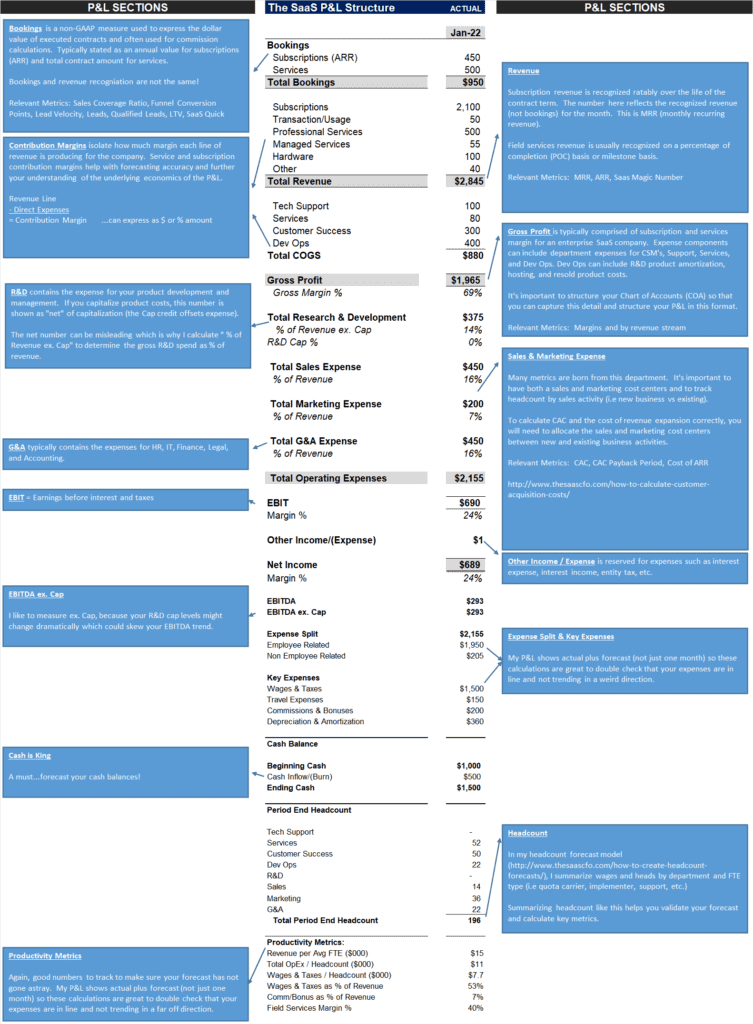
I have worked in finance and accounting for 25+ years. I’ve been a SaaS CFO for 9+ years and began my career in the FP&A function. I hold an active Tennessee CPA license and earned my undergraduate degree from the University of Colorado at Boulder and MBA from the University of Iowa. I offer coaching, fractional CFO services, and SaaS finance courses.